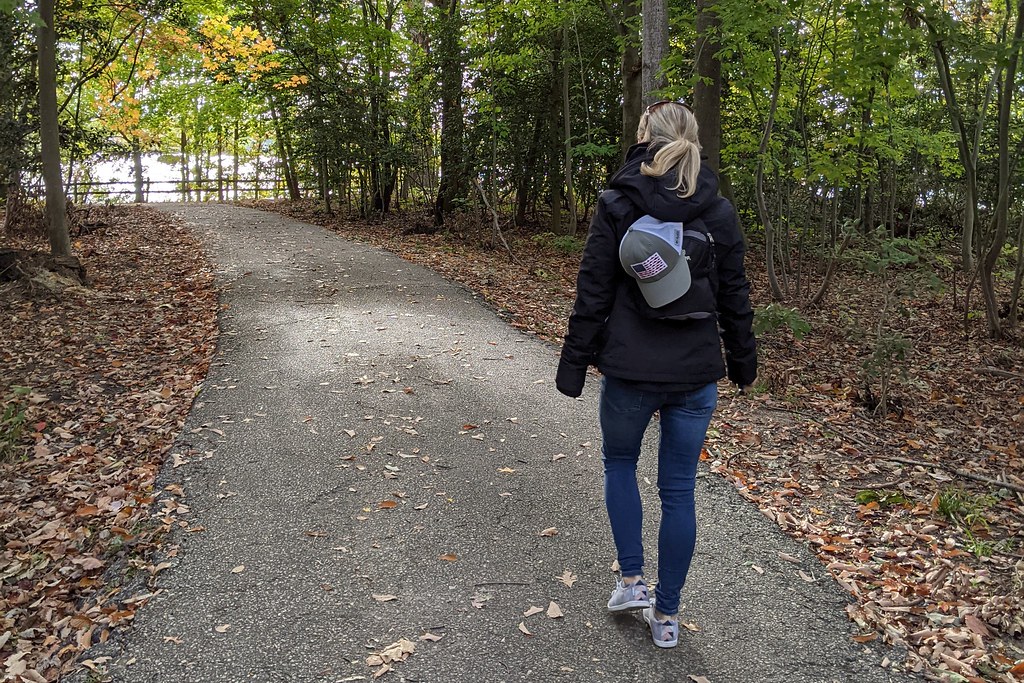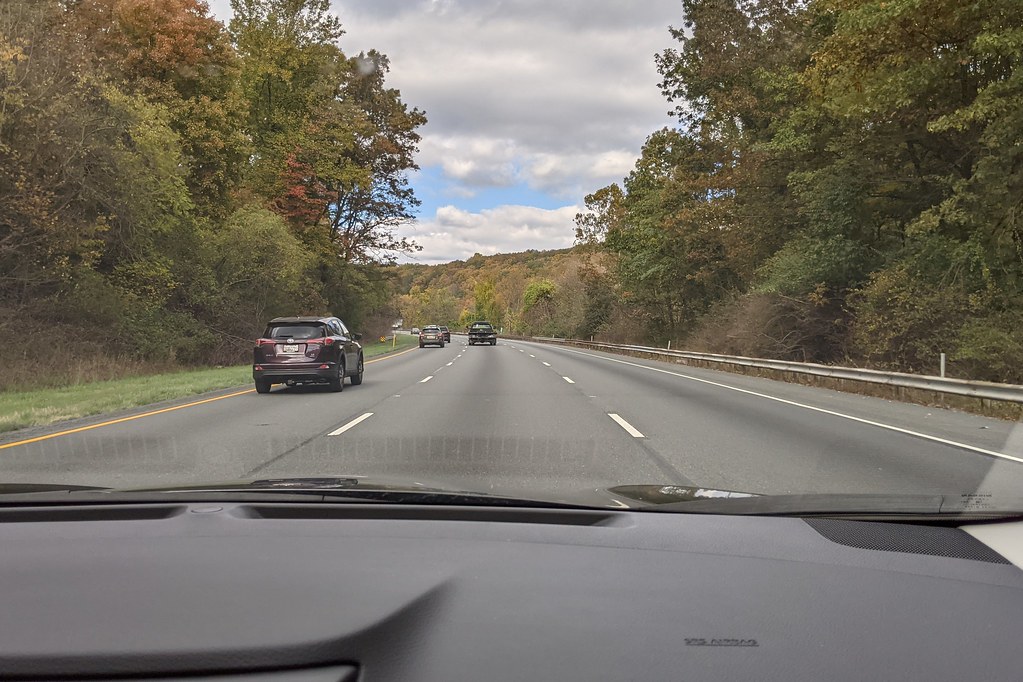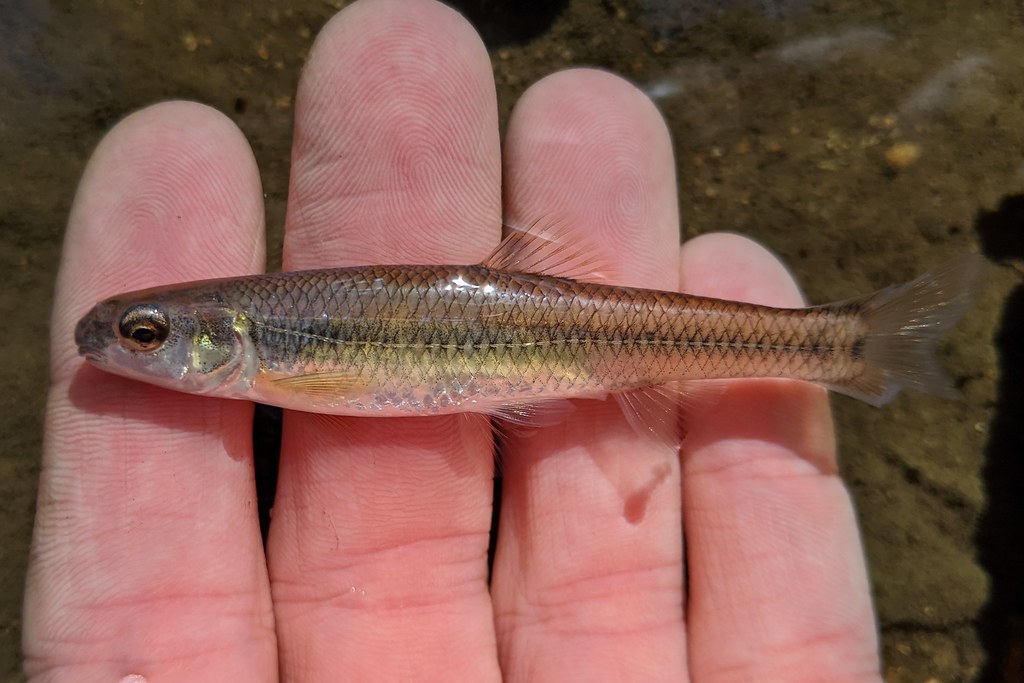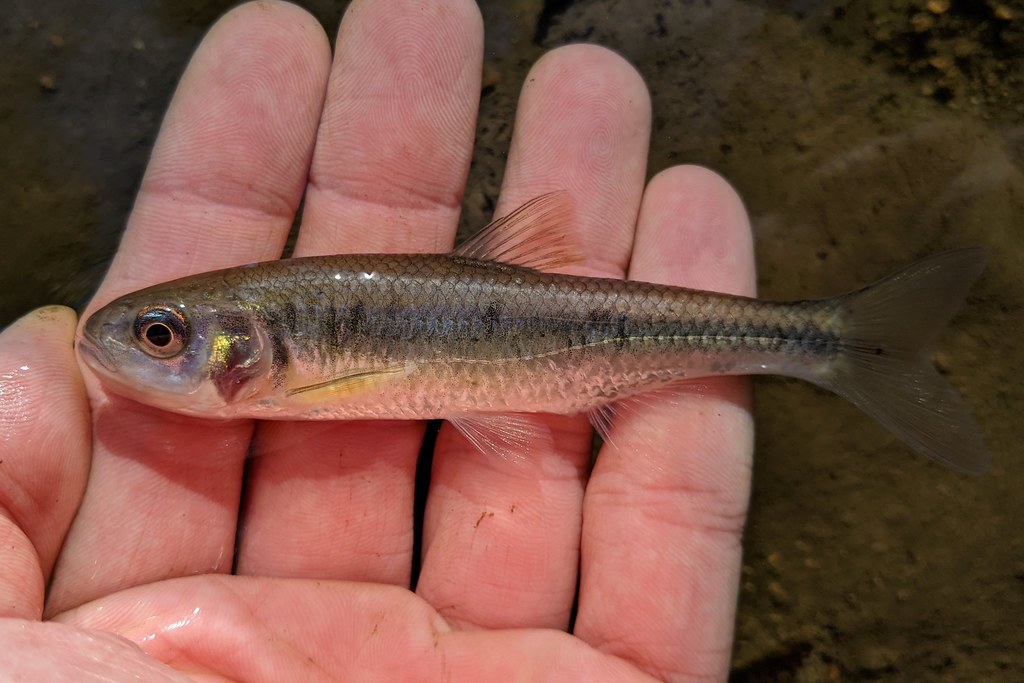
Photo credit Ally Toth.
First up was freshwater goby, which George was able to catch right away, much to our surprise. We looked for striped mojarra as well but no luck. I'm embarrassed to admit this, but I don't think I caught a single fish at this spot.

Next we looked for bigmouth sleeper. George focused on the likely spots for them, and Ally and I fished for other stuff. George caught his sleeper, and we caught a few of the usual fish at this spot.
Florida Largemouth Bass (Micropterus floridanus)

Much to our surprise, George didn't have a frillfin goby, so we made that our third target. They're easy to catch in the Indian River anywhere there's rocks or concrete. George got his goby, and my excitement for the afternoon was landing another angler's gafftopsail catfish. I wish I could catch one this big! The next morning we sent George to one last spot for molly miller, and later that night he emailed me several photos of ones he caught.
Gafftopsail Catfish (Bagre marinus)
Two weeks later we got an invite from Dom to go deep dropping for swordfish. That's an invite you do not say no to! We headed far offshore to the area where he's caught them before.

Dom has a huge electric reel for swordfishing. The weight required to keep the line from bowing in the Gulf Stream current is around seven pounds. That's not a weight you want to reel up manually a third of a mile.

My fish finder can occasionally show bottom in over 1000 feet, but it's only reliable up to 500 or 600 feet. We tried for swordfish in over 1700 feet. Even if we didn't hook a swordfish, I was excited at the prospect of catching anything that lives that far down.

We didn't hook up with our target, but we did have one short bite. The bait was a whole squid with a skirt similar to what you would use for trolling. We though we saw a few small taps on the rod, and when we pulled the bait up the back half of the squid was missing.
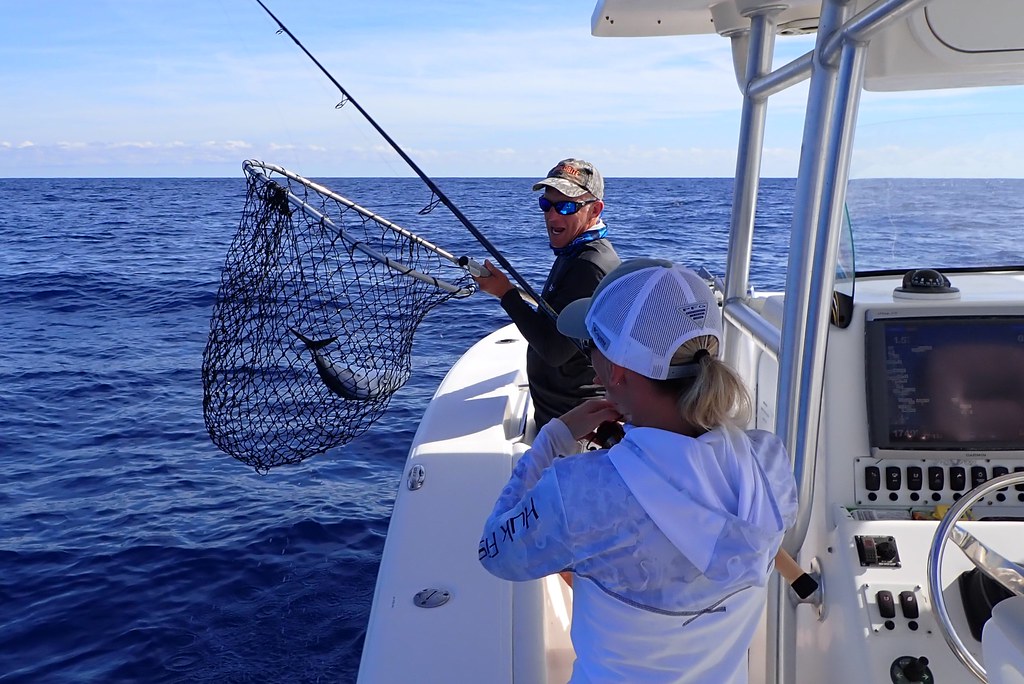
We were glad she was the one to hook up, because it turned out to be her lifer skipjack! It got turned into a few days worth of sashimi and a couple of good shark baits.
Skipjack Tuna (Katsuwonus pelamis)

The wind and current were pretty mild, so I was able to use my manual reel at the deep drop spot. I recently took off the 65 pound braid and replaced it with 30 pound. It helps me hold bottom much more easily. Right away we got bites, and I pulled up a pair of blackbelly rosefish.
Blackbelly Rosefish (Helicolenus dactylopterus)
We took turns dropping, hoping for something new, and eventually I pulled up a red fish from 1025 feet that looked different from the blackbelly rosefish. We could tell it was a scorpionfish, but it took a few days to settle on the ID.

Next we looked for bigmouth sleeper. George focused on the likely spots for them, and Ally and I fished for other stuff. George caught his sleeper, and we caught a few of the usual fish at this spot.
Florida Largemouth Bass (Micropterus floridanus)

Much to our surprise, George didn't have a frillfin goby, so we made that our third target. They're easy to catch in the Indian River anywhere there's rocks or concrete. George got his goby, and my excitement for the afternoon was landing another angler's gafftopsail catfish. I wish I could catch one this big! The next morning we sent George to one last spot for molly miller, and later that night he emailed me several photos of ones he caught.
Gafftopsail Catfish (Bagre marinus)

Photo credit Ally Toth.
Two weeks later we got an invite from Dom to go deep dropping for swordfish. That's an invite you do not say no to! We headed far offshore to the area where he's caught them before.

Dom has a huge electric reel for swordfishing. The weight required to keep the line from bowing in the Gulf Stream current is around seven pounds. That's not a weight you want to reel up manually a third of a mile.

My fish finder can occasionally show bottom in over 1000 feet, but it's only reliable up to 500 or 600 feet. We tried for swordfish in over 1700 feet. Even if we didn't hook a swordfish, I was excited at the prospect of catching anything that lives that far down.

We didn't hook up with our target, but we did have one short bite. The bait was a whole squid with a skirt similar to what you would use for trolling. We though we saw a few small taps on the rod, and when we pulled the bait up the back half of the squid was missing.
The plan for the rest of the day was to deep drop with smaller hooks around 1000 feet. Before we moved though, we saw some small tuna chasing bait on the surface. Ally threw a small Krocodile and hooked up.

We were glad she was the one to hook up, because it turned out to be her lifer skipjack! It got turned into a few days worth of sashimi and a couple of good shark baits.
Skipjack Tuna (Katsuwonus pelamis)

The wind and current were pretty mild, so I was able to use my manual reel at the deep drop spot. I recently took off the 65 pound braid and replaced it with 30 pound. It helps me hold bottom much more easily. Right away we got bites, and I pulled up a pair of blackbelly rosefish.
Blackbelly Rosefish (Helicolenus dactylopterus)

We took turns dropping, hoping for something new, and eventually I pulled up a red fish from 1025 feet that looked different from the blackbelly rosefish. We could tell it was a scorpionfish, but it took a few days to settle on the ID.






